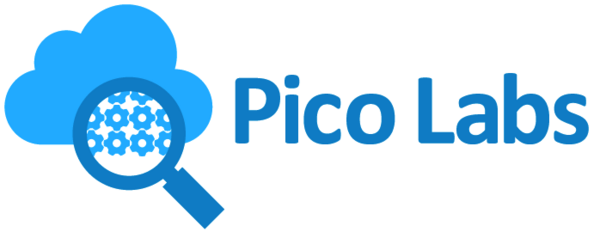Summary
I was recently asked to respond in writing to the prompt "What is the most inventive or innovative thing you've done?" I decided to write about picos.

In 2007, I co-founded a company called Kynetx and realized that the infrastructure necessary for building our product did not exist. To address that gap, I invented picos, an internet-first, persistent, actor-model programming system. Picos are the most inventive thing I've done. Being internet-first, every pico is serverless and cloud-native, presenting an API that can be fully customized by developers. Because they're persistent, picos support databaseless programming with intuitive data isolation. As an actor-model programming system, different picos can operate concurrently without the need for locks, making them a natural choice for easily building decentralized systems.
Picos can be arranged in networks supporting peer-to-peer communication and computation. A cooperating network of picos reacts to messages, changes state, and sends messages. Picos have an internal event bus for distributing those messages to rules installed in the pico. Rules in the pico are selected to run based on declarative event expressions. The pico matches events on its bus with event scenarios declared in each rule's event expression. The pico engine schedules any rule whose event expression matches the event for execution. Executing rules may raise additional events which are processed in the same way.
As Kynetx reacted to market forces and trends, like the rise of mobile, the product line changed, and picos evolved and matured to match those changing needs, becoming a system that was capable of supporting complex Internet-of-Things (IoT) applications. For example, we ran a successful Kickstarter campaign in 2013 to build a connected car product called Fuse. Fuse used a cellular sensor connected to the vehicle's on-board diagnostics port (OBD2) to raise events from the car's internal bus to a pico that served as the vehicle's digital twin. Picos allowed Fuse to easily provide an autonomous processing agent for each vehicle and to organize those into fleets. Because picos support peer-to-peer architectures, putting a vehicle in more than one fleet or having a fleet with multiple owners was easy.
Fuse presented a conventional IoT user experience using a mobile app connected to a cloud service built using picos. But thanks to the inherently distributed nature of picos, Fuse offered owner choice and service substitutability. Owners could choose to move the picos representing their fleet to an alternate service provider, or even self-host if they desired without loss of functionality. Operationally, picos proved more than capable of providing responsive, scalable, and resilient service for Fuse customers without significant effort on my part. Fuse ultimately shut down because the operator of the network supplying the OBD2 devices went out of business. But while Fuse ran, picos provided Fuse customers with an efficient, capable, and resilient infrastructure for a valuable IoT service with unique characteristics.
The characteristics of picos make them a good choice for building distributed and decentralized applications that are responsive, resilient to failure, and respond well to uneven workloads. Asynchronous messaging and concurrent operation make picos a great fit for modern distributed applications. For example, picos can synchronously query other picos to get data snapshots, but this is not usually the most efficient interaction pattern. Instead, because picos support lock-free asynchronous concurrency, a system of picos can efficiently respond to events to accomplish a task using reactive programming patterns like scatter-gather.
The development of picos has continued, with the underlying pico engine having gone through three major versions. The current version is based on NodeJS and is open-source. The latest version was designed to operate on small platforms like a Raspberry PI as well as cloud platforms like Amazon's EC2. Over the years hundreds of developers have used picos for their programming projects. Recent applications include a proof-of-concept system supporting intention-based ecommerce by Customer Commons.
The architecture of picos was a good fit for Customer Commons' objective to build a system promoting user autonomy and choice because picos provide better control over apps and data. This is a natural result of the pico model where each pico represents a closure over services and data. Picos cleanly separate the data for different entities. Picos, representing a specific entity, and rulesets representing a specific business capability within the pico, provide fine grained control over data and its processing. For example, if you sell a car represented in Fuse, you can transfer the vehicle pico to the new owner, after deleting the Trips application, and its associated data, while leaving untouched the maintenance records, which are isolated inside the Maintenance application in the pico.
I didn't start out in 2007 to write a programming language that naturally supports decentralized programming using the actor-model while being cloud-native, serverless, and databaseless. Indeed, if I had, I likely wouldn't have succeeded. Instead picos evolved from a simple rule language for modifying web pages to a powerful, general-purpose programming system for building any decentralized application. Picos are easily the most important technology I've invented.




